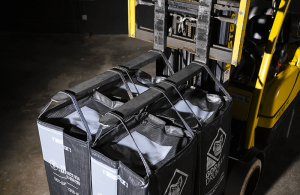 Transporting hazardous materials requires extreme care. Even small leaks or spills during transit can result in environmental damage, safety hazards, and regulatory violations. Whether you’re shipping chemicals, industrial waste, or other dangerous goods, proper handling and packaging are essential to minimize risks.
Transporting hazardous materials requires extreme care. Even small leaks or spills during transit can result in environmental damage, safety hazards, and regulatory violations. Whether you’re shipping chemicals, industrial waste, or other dangerous goods, proper handling and packaging are essential to minimize risks.
From selecting the right hazmat drums to following loading and inspection protocols, every step plays a role in ensuring safety. Gorilla Drum provides UN and DOT compliant solutions that make hazardous material transport safer and more efficient.
Understanding the Risks of Drum Transport
When moving hazardous materials, leaks or spills often occur due to improper packaging, mishandling, or damaged containers. A hazardous waste drum that is overfilled, poorly sealed, or not rated for the contents may fail under pressure or vibration during transit.
Other common causes include:
-
Using incompatible materials for certain chemicals
-
Dropping or stacking drums incorrectly
-
Transporting drums without proper secondary containment
-
Exposure to extreme temperatures or rough terrain
These issues highlight why UN rated hazmat drums and DOT approved hazmat containers are required for the transportation of dangerous goods.
Choose the Right Drum for the Material
The foundation of safe drum transport begins with selecting the correct container for the specific type of material being moved. The right hazmat drum depends on factors such as chemical compatibility, waste classification, and transportation method.
Options include:
-
Steel drums for flammable or high-temperature substances
-
Plastic or polyethylene drums for corrosive chemicals
-
Composite or hybrid drums for mixed or reactive materials
-
Collapsible containers like Gorilla Drum for improved space efficiency
A 55 gallon hazmat drum remains the most common size for industrial transport, but capacity alone isn’t enough. Each drum must also carry the proper UN and DOT certification to confirm it has passed rigorous testing.
For help matching the right container to your material, see the Guide To Choosing The Right Hazmat Drums For Waste Storage.
Verify UN and DOT Compliance
All hazmat storage drums and transport containers must meet specific testing and labeling requirements. UN rated hazmat drums are tested for drop resistance, leakproofness, stacking, and hydrostatic pressure. DOT approval ensures the container complies with U.S. transportation safety standards.
Before use, check each drum for:
-
Clear UN and DOT markings
-
Proper weight capacity
-
Correct closure and gasket type
-
Visible manufacturing date and condition
Drums without readable certification markings or with signs of corrosion or wear should never be used for hazardous waste transport.
Proper Filling Procedures
Overfilling is one of the most common causes of leaks during transport. Always follow fill-level guidelines provided by the container manufacturer.
General best practices include:
-
Leave headspace at the top of the drum to allow for liquid expansion.
-
Ensure solids or sludges are evenly distributed.
-
Avoid trapping air bubbles in viscous materials.
-
Do not exceed the rated gross weight of the container.
Proper filling not only prevents leaks but also improves load balance, reducing stress on seals and closures during movement.
Secure and Seal All Closures
Even a high-quality container can fail if closures are not properly secured. For drums containing hazardous materials:
-
Tighten all lids, bungs, and locking rings to manufacturer specifications.
-
Check that gasket materials are compatible with the contents.
-
Use torque wrenches for precise closure tension.
-
Apply tamper-evident seals when required for security or compliance.
A small oversight in sealing can lead to major issues in transit. Double-checking closures before loading is a simple but crucial safety measure.
Use Secondary Containment and Spill Control
Secondary containment is a key line of defense against leaks and spills. Drums should be placed on spill pallets, within containment trays, or inside lined transport vehicles to capture any accidental releases.
Containment systems should be able to hold at least 10% of the total volume being transported or 100% of the largest single container, whichever is greater. For added security, consider absorbent liners or overpack drums.
Proper Loading and Securing Techniques
How drums are arranged and secured inside the transport vehicle directly impacts safety. Improper stacking or spacing can cause shifting during movement, leading to punctures or collapses.
Follow these guidelines:
-
Always load drums upright and ensure they cannot roll or tip.
-
Use straps, chocks, or barriers to keep containers stable.
-
Avoid stacking unless drums are specifically rated for it.
-
Distribute weight evenly to maintain vehicle balance.
-
Place heavier drums at the bottom and lighter ones on top if stacking is allowed.
These steps minimize vibration and prevent structural stress on the containers during travel.
Temperature and Environmental Considerations
Temperature fluctuations can cause materials to expand or contract, creating internal pressure. To prevent leaks or ruptures:
-
Avoid exposing drums to direct sunlight for extended periods.
-
Maintain a stable environment inside transport vehicles.
-
Use insulation or temperature-controlled transport for sensitive chemicals.
Extreme heat, cold, or humidity can weaken seals or distort container materials, especially for plastic hazmat barrels or chemical barrel types.
Routine Inspection During Transit
Periodic inspection during transport is another layer of protection. Drivers or handlers should check for signs of leaks, bulging, or unusual odors whenever possible.
If a leak is detected:
-
Stop transport immediately and contain the spill if it can be done safely.
-
Notify environmental and emergency authorities if required.
-
Replace or overpack any compromised containers before resuming transport.
Preparedness ensures that minor issues don’t escalate into major incidents.
Training and Compliance
Anyone involved in the handling or transport of hazardous materials should be properly trained in DOT and EPA regulations. Training covers container selection, labeling, loading, emergency response, and documentation.
Facilities must also maintain records of shipments and inspections to demonstrate compliance. Proper documentation ensures traceability and accountability throughout the waste management process.
Gorilla Drum: A Safer, More Efficient Transport Solution
Gorilla Drum offers an advanced, UN and DOT compliant solution for chemical drum storage and transport. Made from high-strength polypropylene, these collapsible containers are designed for both liquids and solids, offering superior containment performance with reduced storage footprint.
Key advantages include:
-
Reinforced zipper closure for leak prevention
-
Lightweight construction for easier handling
-
Stack-tested design for safety in transport
-
Corrosion resistance for chemical compatibility
-
Collapsible structure for efficient return shipping
Gorilla Drum helps facilities reduce risk, save space, and stay fully compliant with hazardous waste transport regulations.
Final Thoughts
Preventing leaks and spills during drum transport requires attention to detail, proper equipment, and compliance with safety standards. From choosing the right drum and securing closures to using secondary containment and stable loading practices, every step matters.
For expert solutions that enhance safety and efficiency in chemical waste transport, trust Gorilla Drum’s innovative, compliant, and reusable containers.
To learn more or request information about compliant hazmat drum options, call +1 800-758-8079.

